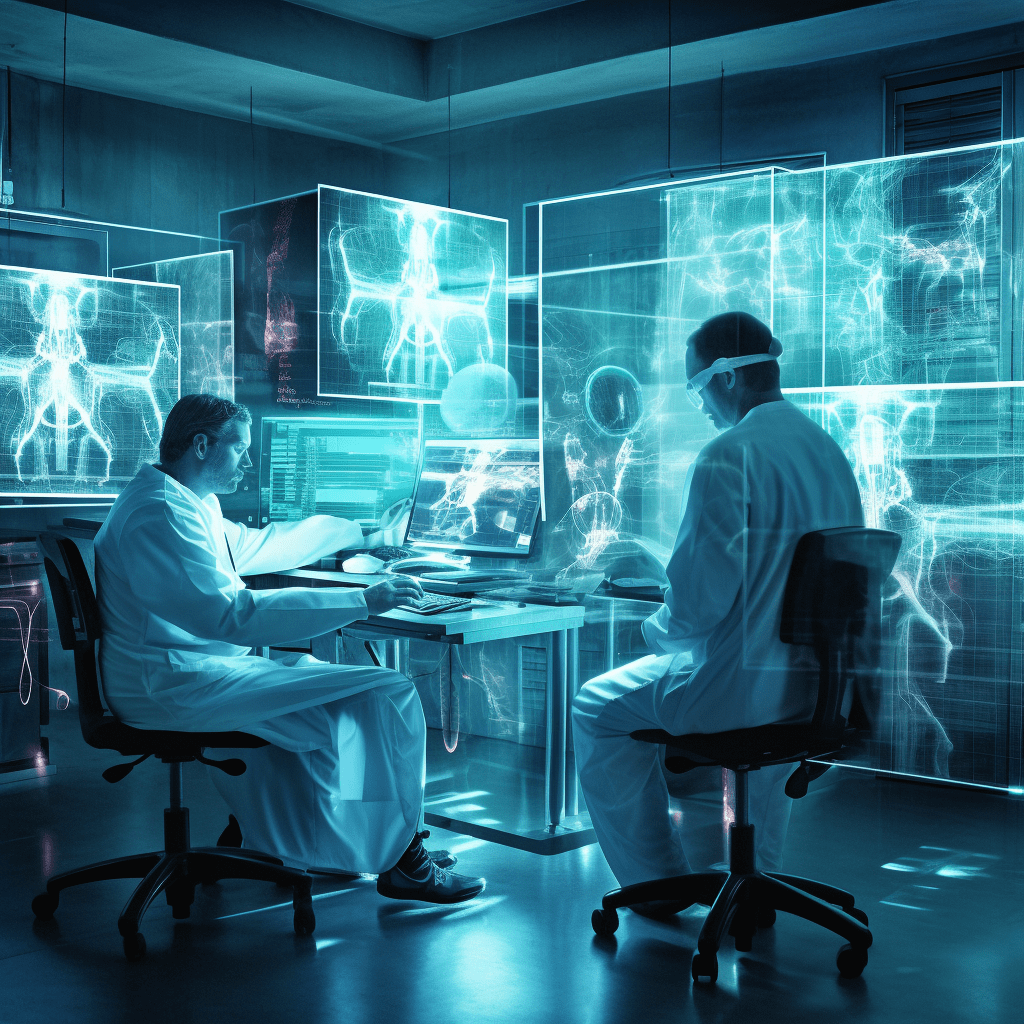An Evaluation of Data Capture and Visualization in Clinical Research
 3 years ago
By Charlotte Di Salvo
3 years ago
By Charlotte Di Salvo

Data capture and visualization are the key components of clinical trial data analysis. However, with the explosion of COVID-19 around the world, data collection became difficult with poor patient recruitment and a reduction in face-to-face clinics. Advancements in telehealth have enabled clinical trials to collect data virtually, pointing to a potential future for clinical research.
For daily articles on the latest pharma trends and innovations, as well as interviews with leading experts and in-depth industry White Papers, subscribe to PharmaFeatures.com.
How do clinical trials collect data?
Data capture is the term used to describe how clinical trials collect and manage their data. Electronic data capture (EDC) is a digital platform that enables CROs to collect data securely as well as accelerate the research process. The original paper-based data capture was less secure, and data reusability more difficult in comparison to EDC systems. The storage of clinical trial data within a web-based database offers greater security for sensitive data in comparison to traditional Case Report Forms (CRFs). EDCs vary in their parameters and specifications and according to a 2019 article, the choice of an EDC is typically determined by the following features:
• user-friendly interface, designed to meet the specific needs of medical researchers
• a user-access controlled platform that facilitates collaboration among multiple sites and researchers around the world
• the ability to set data limits for all captured data to reduce human error
• assured compliance with privacy and data protection policies, ensuring that mandatory regulations are met, and that research data is collected and maintained
• seamless integration with existing tools, wearables, legacy systems, and other technology
• the ability to reuse research data for the initial research team, the statistical analysis team, and any future users of the data
• access to proactive support and technical advisors to help set up your clinical trials
However, with data capture comes a huge volume of data, from patients’ medical history to pathology reports to administrative information. Data visualization helps to sort and manage the huge amount of collected data. Typically, data visualization works by converting the data in charts and graphs to enable a comprehensive qualitative and quantitative analysis. Optimized data visualization supports clinicians in recognising trends in patient health and the impact of interventions over time.
According to a 2017 article, there are three types of interactive data visualizations: demographic data, adverse event data and laboratory data. Interactive data visualization allows clinicians to change the level of data they wish to see, potentially speeding up data analysis. Interaction with the data allows the sharing of detailed insights and presents domains not typically represented graphically e.g., adverse events.
Successes and challenges of current technologies
Electronic consent (eConsent)
The ethical requirements and standardized participation information has previously resulted in extensive, complex consent documents. These dense, complicated documents can confuse patients and potentially compromised recruitment for participants put off by the complex consent process. eConsent is a relatively new system which hopes to improve patient engagement. The following features described in a 2020 review offer key advantages over traditional written consent:
• the use of multimedia tools to enhance comprehension
• ready conversion into multiple languages
• a means to track consent in a highly portable manner
• the opportunity to provide information in a more convenient way to persons with an inability to attend clinics
eConsent is a multimedia tool with a multitude of interactive features that enables patients to make informed decisions. Examples of these features include pictures and diagrams, comment boxes, glossaries and a platform for electronic signatures. Gaining a better insight into patient experience promises better cooperation, greater recruitment and improved efficiency of clinical trials.
There are some obvious flaws, however. In a review of the usability of eConsent, younger users reported greater satisfaction with the technology as a method of informed consent. Older participants on the contrary, were more sceptical and concerned in terms of their privacy and confidentiality of data using mobile technology. Another key issue is that the multimedia components of eConsent may not be accepted in certain countries or sites.
Telehealth
Telehealth, also known as telemedicine, is the use of remote technology typically used for clinical consultations and the delivery of healthcare. It allows communication between patients and healthcare providers outside the clinical environment. One example of telemedicine is the monitoring of blood glucose levels in diabetic patients at home.
Recent events such as the COVID-19 pandemic have highlighted the value of telemedicine in clinical trials. The virtual trials that emerged during the pandemic utilized telemedicine to continue clinical trials whilst reducing patient-clinician contact in risk assessments.
Remote monitoring and televisits are some examples of telehealth that enabled the continuation of trials in the absence of on-site monitoring and clinic visits. A 2020 article by IQVIA expanded upon the benefits of telemedicine, suggesting that virtual trials will continue to be used in the future. In the article it infers that combining virtual trials with traditional on-site studies (hybrid trials) will “ease patient burden, expand the patient pool, and lower the cost of operation”.
Future innovations
Limiting clinic visits appears to be the step forward in both healthcare and biopharmaceutical research. Recording data from home not only allows patients to continue their daily routines, but fewer face-to-face visits with clinicians also significantly cuts costs for sponsors.
Wearable devices have been in the background of clinical research for the last few years, emerging now as a potential method of collecting data from patients outside the clinic. The best-known commercial devices are fitness trackers known as actigraphy bracelets. In healthcare, wrist-worn actigraphy devices are important in measuring vital signs like heart rate, blood pressure and electrodermal activity. This is often used to monitor patients with cardiovascular conditions especially.
Actigraphy bracelets have shown the potential to improve the data collection for a multitude of diseases, sleep especially. Sleep data collection through studies in sleep labs are not often representative of a patient’s condition. Sleeping in the unknown, clinical environment for long periods of time can impact the natural sleep pattern, producing unreliable results. These bracelets can still record important parameters such as sleep duration but in a more natural environment than sleep clinics.
A 2018 review infers the potential benefits of such devices in early drug development, whereby the “collection of dense physiological data may identify early safety issues and inform dose adjustments and dosing frequencies, or lead to discontinuation of development of certain drug candidates.”
To discuss these topics further with sector experts, and to ensure you remain up-to-date on the latest in clinical development, sign up for Proventa International’s Clinical Operations Strategy Meeting, set for 15 June 2021.
Charlotte Di Salvo, Junior Medical Writer
Proventa International

Navigating the Complex World of Global Regulatory Affairs in Oncology
In today's fast-paced global pharmaceutical landscape, the regulatory affairs sector plays a pivotal role in ensuring the safety, efficacy, and market access of oncology drugs. As the demand for innovative cancer therapies continues to grow, understanding the intricacies of global...
11 months agoNavigating the Complex World of Global Regulatory Affairs in Oncology
In today's fast-paced global pharmaceutical landscape, the regulatory affairs sector plays a pivotal role in ensuring the safety, efficacy, and market access of oncology drugs. As the demand for innovative cancer therapies continues to grow, understanding the intricacies of global...
11 months ago
Overcoming the Hurdles: Navigating the Challenges in Oncology Clinical Trials
In the world of medical research, oncology clinical trials are at the forefront of innovation and discovery. These trials play a crucial role in advancing our understanding of cancer and developing more effective treatments. However, the path to successful oncology...
11 months agoOvercoming the Hurdles: Navigating the Challenges in Oncology Clinical Trials
In the world of medical research, oncology clinical trials are at the forefront of innovation and discovery. These trials play a crucial role in advancing our understanding of cancer and developing more effective treatments. However, the path to successful oncology...
11 months ago
Embracing a Patient-Centric Approach in Oncology Trials
In the realm of healthcare and medical research, the term "patient-centric" has gained significant traction in recent years. This shift in focus towards prioritizing patients' needs and preferences is not only transforming the healthcare industry but is also making waves...
11 months agoEmbracing a Patient-Centric Approach in Oncology Trials
In the realm of healthcare and medical research, the term "patient-centric" has gained significant traction in recent years. This shift in focus towards prioritizing patients' needs and preferences is not only transforming the healthcare industry but is also making waves...
11 months ago